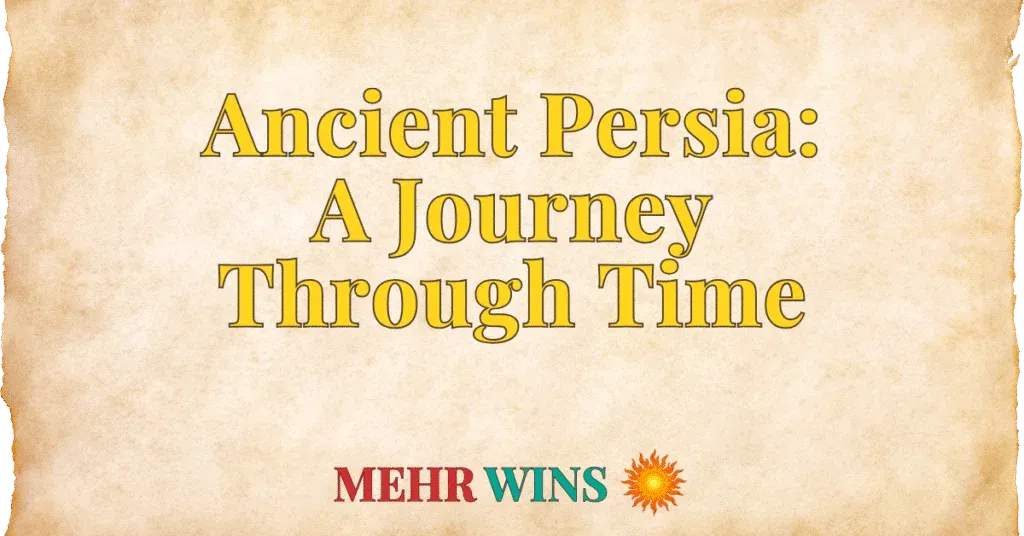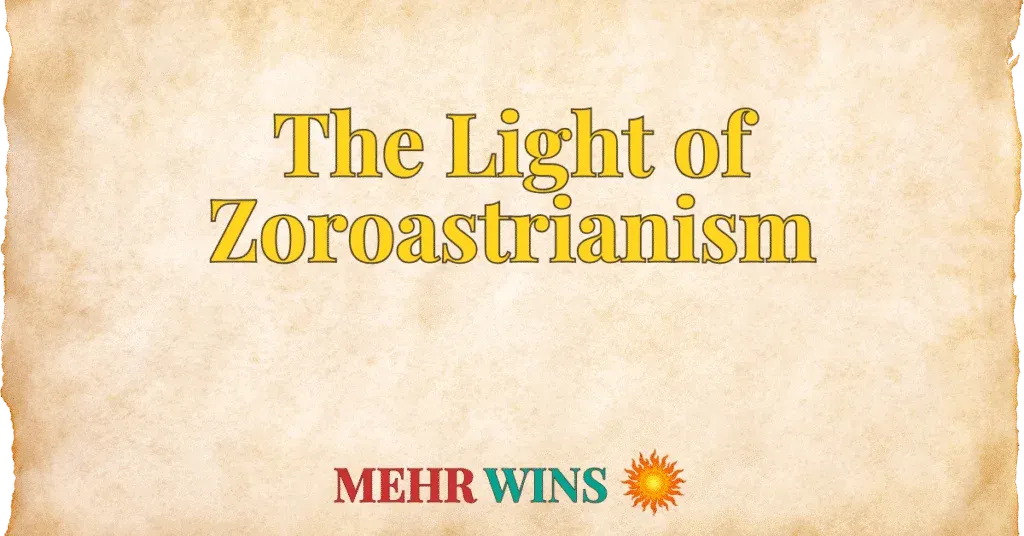
This exploration delves into the remarkable history of ancient Persia, a civilization whose influence shaped millennia and continues to resonate in the modern world. Many are unaware of just how ancient and pivotal this region was to the development of human civilization. From its earliest organized societies to the grandeur of its vast empires, we will trace its path up to the dramatic turning point of the Islamic conquest, revealing how its profound cultural depth allowed many traditions, including its unique understanding of time, to endure and be celebrated even today.
Dawn of Civilization: Elamite Beginnings
Long before the empires most commonly associated with “Persia” emerged, the Iranian plateau was home to sophisticated cultures, most notably the Elamites. Flourishing in modern-day southwestern Iran, with centers like Susa and Anshan, the Elamite civilization dates back to around 3200 BCE. This makes the roots of organized society in Persia as old, if not older, than many of the Mesopotamian civilizations to their west.
The Proto-Elamite period (circa 3200-2700 BCE) saw the development of one of the earliest writing systems, the Proto-Elamite script, demonstrating advanced administrative practices. The Elamites, distinct in language from the later Indo-European Persians, engaged in complex interactions, often conflicts, sometimes alliances, with powerful Mesopotamian entities. Their period is characterized by strong urban centers, intricate metalwork, pottery, and monumental architecture, including the impressive ziggurat of Chogha Zanbil. They developed sophisticated irrigation systems, vital for agriculture in the region. Elamite influence on later Persian culture is undeniable, especially through Susa, which later became a significant Achaemenid capital. Cultural and infrastructural elements laid by the Elamites would be adopted and adapted by succeeding Iranian empires, showcasing an early continuity on the plateau.
The Medes: Forging Iranian Identity
As Elam faded, new Iranian peoples, including the Medes and Persians, migrated into the plateau. These migrations, part of broader Indo-Iranian movements from the Eurasian steppes, introduced Indo-European languages and new cultural elements. The Medes, settling primarily in northwestern Iran, gradually unified various tribes and established a powerful kingdom with their capital at Ecbatana (modern Hamadan) around 678 BCE. They were renowned for their skilled cavalry and strategic warfare, crucial in their campaigns against the formidable Assyrian Empire.
The Medes played a pivotal role in the downfall of the Assyrian Empire, famously sacking Nineveh in 612 BCE alongside the Babylonians. This victory significantly altered the balance of power in the Near East and paved the way for Iranian dominance. While the Median Empire itself was relatively short-lived as an independent power, it was instrumental in consolidating various Iranian tribes and laying administrative and military groundwork inherited and expanded upon by their Persian kinsmen. Their military organization and use of cavalry would significantly influence the fighting forces of the succeeding Achaemenids.
Achaemenid Glory: The First Great Empire
The true dawn of what is widely recognized as the “Persian Empire” arrived with Cyrus the Great, an Achaemenid prince from Pars, who revolted against the Median king Astyages in 550 BCE. Cyrus swiftly conquered the Median Empire, unifying the Iranian lands. What followed was an unprecedented expansion, as Cyrus defeated the powerful Lydian Kingdom in Asia Minor and, most famously, captured Babylon in 539 BCE. His entry into Babylon was marked by a remarkably humane approach, documented in the Cyrus Cylinder, often hailed as the world’s first declaration of human rights. This remarkable document outlined policies of religious tolerance and the return of displaced peoples. He allowed conquered peoples, including the Jews exiled in Babylon, to return to their homelands and practice their religions freely, a policy of religious tolerance that became a hallmark of Achaemenid rule.
Under Cyrus and his successors, notably Darius I and Xerxes I, the Achaemenid Empire reached its zenith, becoming the largest empire the world had ever seen. It stretched from parts of Northern Greece and Egypt to the Indus Valley, encompassing an astonishing 44% of the world’s population at its height. This vast dominion was maintained through an ingenious system of governance and administrative innovations:
- Satrapy System: The empire was brilliantly divided into approximately 20 provinces (satrapies), each governed by a satrap, usually a Persian noble. While satraps held considerable power, they were overseen by “Eyes and Ears of the King” royal inspectors who ensured loyalty and proper administration, minimizing corruption and rebellion.
- Royal Road: Darius I constructed the Royal Road, an extensive network spanning over 1,600 miles, facilitating rapid communication and trade. This, coupled with an efficient postal system using relay stations, allowed for swift transmission of messages and movement of troops, unifying the vast empire. This infrastructure was a marvel of ancient engineering.
- Standardized Coinage: The introduction of the “Daric,” a standardized gold coin, revolutionized trade and commerce, promoting economic stability across diverse regions and facilitating the vast imperial economy.
- Multiculturalism and Tolerance: The Achaemenids actively embraced and integrated the cultures, religions, and traditions of their conquered peoples, fostering loyalty and minimizing rebellions. This policy stood in stark contrast to the often brutal conquests of previous empires like the Assyrians, establishing a model for managing diverse populations that many later empires would emulate.
- Monumental Architecture: Grand capitals like Pasargadae, Susa, and particularly Persepolis, showcased the empire’s power and artistic prowess. Persepolis, with its magnificent palaces, audience halls, and intricate reliefs depicting peoples from across the empire, served as a ceremonial center and a potent symbol of Achaemenid grandeur and multicultural unity.
- The Concept of “Paradise”: The Achaemenid period also saw the development and popularization of the Persian garden, known as pairi-daeza (meaning “walled garden” or “enclosure”), from which the English word “paradise” is derived. These elaborate, often geometrically planned gardens with flowing water and carefully cultivated plants were not just aesthetic spaces but symbolic representations of an idealized, harmonious world, reflecting an earthly paradise. This concept profoundly influenced garden design and the idea of paradise in many later cultures, including Abrahamic religions.
- Old Persian Language: The Achaemenid Empire introduced Old Persian, an Old Iranian language, primarily known from royal inscriptions in cuneiform script, such as the Behistun Inscription of Darius I. This period marked a distinct phase in the evolution of the Persian language.
The Achaemenid period was a golden age of stability, prosperity, and cultural exchange, where Persian art, administration, and military organization influenced countless subsequent civilizations. They served as a crucial bridge for cultural exchange between East and West, absorbing influences from Mesopotamia, Egypt, and Greece while also exporting their own innovations. However, the empire eventually met its end with the invasion of Alexander the Great. After a series of decisive battles, the last Achaemenid king, Darius III, was defeated, and the empire fell to the Macedonian conqueror in 330 BCE. This marked the end of the first great Persian imperium and ushered in a period of Hellenistic rule.
Seleucids and Parthians: Resilience and Rivalry
Following Alexander’s death, his vast empire was divided among his generals. The Persian lands largely fell under the control of Seleucus I Nicator, establishing the Seleucid Empire (312-63 BCE). This era saw the spread of Hellenistic culture, with Greek cities and institutions established throughout the former Persian territories. While Greek became the language of administration, Persian traditions continued to persist, often in subtle forms, especially in rural areas.
However, Hellenistic rule was not universally accepted. From the northeastern parts of the former Achaemenid Empire, a new Iranian power began to rise: the Parthians. Originating from the Parni tribe, the Arsacids, led by Arsaces I, established the Parthian Empire around 247 BCE. Over centuries, they gradually pushed back against Seleucid control, eventually ousting them from Iran and Mesopotamia.
The Parthian Empire (247 BCE – 224 CE) was characterized by a more decentralized feudal system compared to the Achaemenids. Their military strength lay in their highly effective cataphracts (heavily armored cavalry) and horse archers, famously employing the “Parthian shot” (shooting backward while retreating), which proved highly effective against the Roman legions, halting Roman expansion into the East for nearly 400 years. The Parthians became a major rival of the Roman Empire, engaging in numerous wars that often ended in Roman frustration.
Economically, the Parthians grew wealthy by controlling key segments of the Silk Road, the vital network of trade routes connecting the Roman world and China. They acted as crucial intermediaries, facilitating the exchange of goods, ideas, and technologies between East and West. Culturally, they blended Hellenistic influences with ancient Iranian traditions, preserving aspects of Zoroastrianism and developing a distinct Parthian art style. While often overlooked in popular history, the Parthians played a crucial role in maintaining Iranian independence and cultural continuity during a period of foreign domination, setting the stage for a grand revival of Persian identity. This period also saw the development of Middle Persian (Pahlavi), a direct ancestor of modern Persian, which emerged from Old Persian, reflecting the ongoing evolution of the language.
Sasanian Empire: A Cultural Renaissance
The Parthian Empire, weakened by internal strife and incessant wars with Rome, eventually gave way to a new, more centralized, and aggressively Iranian dynasty: the Sasanians. Arising from Pars, the traditional homeland of the Achaemenids, Ardashir I overthrew the last Parthian king, Artabanus IV, in 224 CE, founding the Sasanian Empire. The Sasanians explicitly saw themselves as the successors to the Achaemenids, aiming to restore Persian glory and reclaim territories lost during the Hellenistic period, ushering in a “Neo-Persian” era.
The Sasanian era is often considered the second golden age of ancient Persia. It was a period of strong centralized government, a flourishing of Zoroastrianism as the state religion, and immense cultural and intellectual achievements. The Sasanians were formidable adversaries to the Roman and later Byzantine Empires, engaging in monumental conflicts that shaped the geopolitics of the ancient world.
Key aspects of the Sasanian period include:
- Political and Religious Consolidation: The Sasanians strengthened the central government and actively promoted Zoroastrianism, building fire temples and integrating religious leaders (the magi) into the state apparatus. This fostered a strong national identity and provided a unifying ideology. While Zoroastrianism became the state religion, a degree of pragmatic tolerance was often extended to other religious communities like Christians and Jews, though this varied by ruler.
- Military Prowess: The Sasanian military, with its elite heavy cavalry (Savaran), was highly organized and effective, often achieving significant victories against the Romans, most notably the capture of Emperor Valerian by Shapur I in 260 CE. Their military innovations and discipline were renowned.
- Administrative Reforms: Kings like Khosrow I Anushirvan (the Immortal Soul) implemented significant administrative and tax reforms, creating a more equitable system, increasing agricultural output, and boosting the empire’s prosperity. This highly organized bureaucracy was one of their enduring legacies.
- Architectural Masterpieces: The Sasanians left a legacy of grand architecture, including massive palaces with iconic iwan arches, like the Taq Kasra at Ctesiphon, which profoundly influenced later Islamic architecture. Their use of domes and intricate stucco work set new standards for building.
- Artistic and Scientific Flourishing: Sasanian art, particularly metalwork (such as intricate silver plates), textiles (silk weaving was highly developed), and monumental rock reliefs, was highly sophisticated and prized across the ancient world. They made significant contributions to medicine, astronomy, mathematics, and philosophy, preserving and expanding upon ancient Greek, Indian, and earlier Persian knowledge. The Academy of Gundishapur became a renowned intellectual center, attracting scholars from across the world and translating texts into Middle Persian, thereby playing a crucial role in the transmission of knowledge.
- Middle Persian (Pahlavi) and Literary Development: This period saw Middle Persian (Pahlavi) become the primary literary and administrative language, with a rich body of Zoroastrian religious texts, historical chronicles, and secular literature emerging. This laid the groundwork for the later flourishing of New Persian literature.
The Sasanian Empire, a dominant power for over four centuries, represented the pinnacle of pre-Islamic Persian civilization. However, its long and arduous wars with the Byzantine Empire, coupled with internal weaknesses and a devastating plague, left it vulnerable.
The Islamic Conquest: A Turning Point
The final chapter of ancient Persian history, as an independent, non-Islamic empire, began with the rise of Islam in the Arabian Peninsula. Following the death of the Prophet Muhammad in 632 CE, the nascent Islamic Caliphate rapidly expanded. The exhausted Sasanian Empire, under the reign of Yazdegerd III, faced a new and determined foe.
A series of decisive battles, most notably the Battle of al-Qadisiyyah (circa 636 CE), which saw the defeat of the main Sasanian army, and the Battle of Nahavand (642 CE), often called the “Victory of Victories,” shattered the Sasanian military and effectively sealed the fate of the empire. While pockets of resistance continued for some years, Yazdegerd III was ultimately assassinated in 651 CE, marking the definitive end of the Sasanian Empire and, with it, the era of ancient Persia’s indigenous imperial rule.
An Enduring Cultural Tapestry
The history of Persia, stretching back to the Proto-Elamite civilizations around 3200 BCE, represents one of the longest continuous trajectories of urbanized, sophisticated culture in human history. From the earliest city-states on the Iranian plateau to the vast dominion of the Achaemenids, the geopolitical might of the Parthians, and the intellectual and artistic brilliance of the Sasanians, the region that is now modern-day Iran has been a consistent crucible of innovation and influence.
For over three millennia, Persian civilizations developed groundbreaking administrative systems, built architectural wonders that still inspire awe, fostered philosophical and religious thought that resonated across continents, and established trade networks that connected diverse peoples. Their contributions to law, governance, science, and the arts were not confined to their borders but permeated neighboring civilizations and profoundly shaped the course of global history.
The Islamic conquest in the 7th century CE marked a profound transformation, ushering in a new religious and political order. However, it is crucial to understand that this conquest did not erase the deep-rooted Persian identity or its rich cultural heritage. Instead, the profound depth of Persian culture ensured that its essence was preserved and even flourished in new forms.
One striking example of this enduring heritage is the Persian calendar system. Rooted in ancient astronomical observations, the current Solar Hijri calendar is remarkably precise. Its New Year, Nowruz (meaning “New Day”), is celebrated at the exact moment of the spring equinox, typically around March 21st. This is not merely a date on a calendar; it is a profound cultural celebration of rebirth, renewal, and the triumph of light over darkness, with origins stretching back to Zoroastrian times. Each of the twelve months in the Persian calendar also traditionally aligns with an astrology sign, reflecting a deep historical connection to the celestial cycles and their influence on human life. For instance, the first month, Farvardin, corresponds with Aries, signifying the beginning of spring and new life. These are not merely historical footnotes; they are aspects of a living culture.
The Persian language, Farsi, did not die out either; it evolved into a vibrant vehicle for some of the greatest poetry and literature the world has ever known. Many ancient Persian traditions, like Nowruz, and distinctive artistic styles continued to be observed and celebrated, often integrated into the new Islamic framework. Persian administrative practices, scientific knowledge, and artistic flair were not merely tolerated but were actively embraced and profoundly influenced the broader Islamic Golden Age, contributing immensely to its scientific, literary, and artistic achievements.
Modern Iran, while predominantly Muslim, proudly carries forward this ancient legacy, a testament to the remarkable resilience and enduring spirit of Persian civilization. Understanding this extensive history from its very earliest beginnings more than 5,000 years ago, through its imperial grandeur, and up to the pivotal shifts that define the region today is essential to truly grasp the profound and enduring importance of Persia to the tapestry of human civilization. Indeed, the triumphs of ancient Persia serve as a timeless testament to truth, light, and love enduring throughout history.



